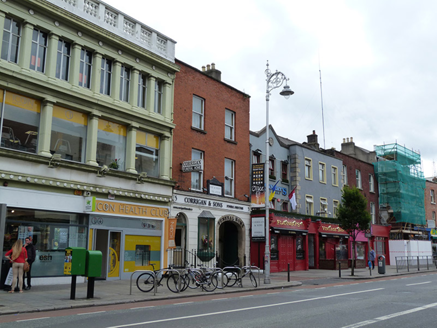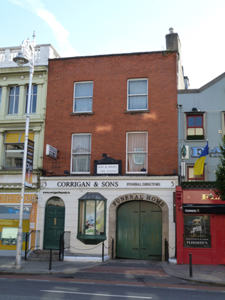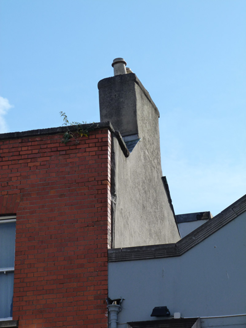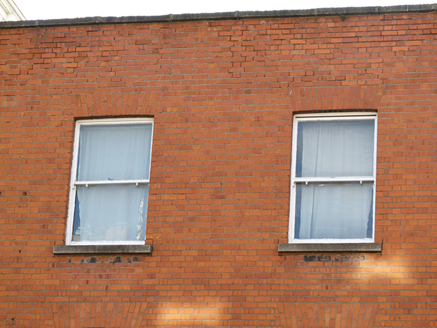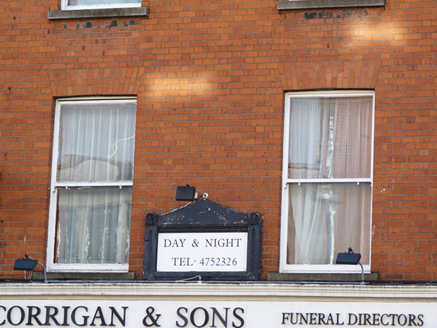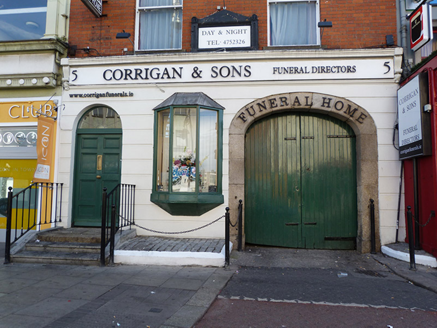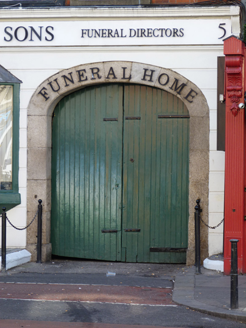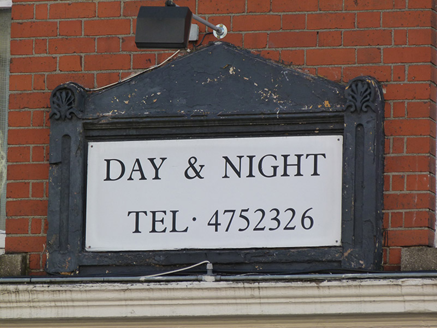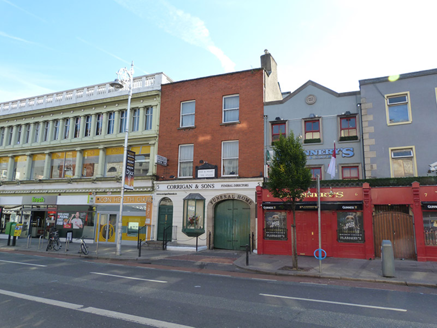Survey Data
Reg No
50920184
Rating
Regional
Categories of Special Interest
Architectural, Social
Original Use
Funeral home
In Use As
Funeral home
Date
1870 - 1920
Coordinates
315616, 233145
Date Recorded
16/08/2015
Date Updated
--/--/--
Description
Attached two-bay three-storey funeral home with integral carriage-arch, built c. 1900, with shopfront to front (west) elevation, and full-height return to rear elevation. Now in use as funeral home. M-profile pitched roof, hipped to north end, hidden behind brick parapet with concrete coping, rendered chimneystacks to south with yellow clay pots. Red brick walling laid in Flemish bond over channelled rendered walls to ground floor, smooth rendered to south elevation. Square-headed window openings having brick voussoirs, concrete sills and one-over-one pane timber sliding sash windows with ogee horns. Shopfront to ground floor comprising timber fascia and cornice with raised lettering, terminated by moulded brackets; central decorative signage plaque over cornice. Canted oriel window with rendered apron and fixed timber windows to north-of-centre. Elliptical-headed carriage-arch to south bay, with ashlar granite surround and double-leaf timber battened door. Round-headed door opening with rendered reveals, replacement fanlight and replacement eight-panelled timber door. Granite platform accessed via three granite steps, flanked by mild steel railings over rendered plinth. Limestone cobbles behind stone plinth, below central bay. Street-fronted and located on east side of Camden Street Lower.
Appraisal
This site has a long history of funeral establishments. Thom’s Directory in 1865 records Eugene Sweeny at this address, described as 'job carriage and funeral establishment.' The current building appears to be a late nineteenth /early twentieth century rebuild. It retains much of its traditional character, and the fine carriage-arch is a particularly eye catching feature, together adding to the character and quality of the streetscape. Camden Street is part of an ancient routeway, that was named St. Kevin’s Port, leading south from the city towards Ranelagh and Enniskerry. It was renamed Camden Street in the late eighteenth century, possibly commemorating Charles Pratt, the first Earl Camden.
